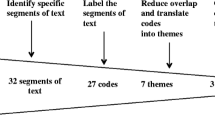Abstract
Software inspections provide a proven approach to quality assurance for software products of all kinds, including requirements, design, code, test plans, among others. Common to all inspections is the aim of finding and fixing defects as early as possible, and thereby providing cost savings by minimizing the amount of rework necessary later in the life cycle. Measurement data, such as the number and type of found defects and the effort spent by the inspection team, provide not only direct feedback about the software product to the project team, but are also valuable for process improvement activities. In this paper, we discuss NASA’s use of software inspections and the rich set of data that has resulted. In particular, we present results from analysis of inspection data that illustrate the benefits of fully utilizing that data for process improvement at several levels. Examining such data across multiple inspections or projects allows team members to monitor and trigger cross project improvements. Such improvements may focus on the software development processes of the whole organization as well as improvements to the applied inspection process itself.
Similar content being viewed by others
References
Basili V, Green S, Laitenberger O, Lanubile F, Shull F, Soerumgaard S, Zelkowitz M (1996) The empirical investigation of perspective-based reading. Empir Softw Eng Int J 1(2): 133–164
Ciolkowski C, Differding C, Laitenberger O, Muench J (1997) Empirical investigation of perspective-based reading: a replicated experiment. International Software Engineering Research Network (ISERN), Technical Report ISERN-97-13
Chillarege R, Bhandari IS, Chaar JK, Halliday MJ, Moebus DS, Ray BK, Wong M-Y (1992) Orthogonal defect classification—a concept for in-process measurements. IEEE Trans Softw Eng 18(11): 943–956
Chrissi MB, Konrad M, Shrum S (2007) CMMI®. Guidelines for process integration and product improvement. SEI series in software engineering, 2nd edn. Addison-Wesley, Reading
Conradi R, Mohagheghi P, Arif T, Hegde LC, Bunde GA, Pedersen A (2003) Object-Oriented reading techniques for inspection of UML models—an industrial experiment. In: European conference on object-oriented programming (ECOOP’03), Darmstadt, Germany
Denger C, Shull F (2007) A practical approach for quality-driven inspections. IEEE Softw 24(2): 79–86
Fagan ME (1976) Design and code inspection to reduce errors in program development. IBM Syst J 15(3): 182–211
Gilb T, Graham D (1993) Software inspection. Addison-Wesley, Reading
Kalinowski M, Travassos GH (2004) A computational framework for supporting software inspections. In: Proceedings of the 19th international conference on automated software engineering (ASE04). IEEE Computer Society, Linz, Austria
Kalinowski M, Travassos GH (2004) ISPIS: a framework supporting software inspection processes. In: Proceedings of the 19th international conference on automated software engineering (ASE04). IEEE Computer Society, Linz, Austria
Kelly JC, Sherif JS, Hops J (1992) An analysis of defect densities found during software inspections. J Syst Softw 17(2): 111– 117
Kolkhorst BG (1992) Space shuttle primary onboard software development: process control and defect cause analysis. IBM Corporation Technical Report, Houston, Texas, pp 1–15
Laitenberger O, El Emam K, Harbich T (2000) An internally replicated quasi-experimental comparison of checklist and perspective-based reading of code documents. IEEE Trans Softw Eng 27(5): 387–421
NASA Procedural Requirements 7150.2 (2009) Subject: NASA Software Engineering Requirements. http://nodis3.gsfc.nasa.gov/displayDir.cfm?t=NPR&c=7150&s=2. Accessed 30 Jun 2009
Nick M, Denger C, Willrich T (2005) Experience-based support for code inspections. In: Althoff K-D, Dengel A, Bergmann R, Nick M, Roth-Berghofer T (eds):Professional knowledge management, third biennial conference, WM 2005, Kaiserslautern, Germany, pp 121–126
Porter A, Votta L (1998) Comparing detection methods for software requirement inspections: a replicated experiment using professional subjects. Empir Softw Eng Int J 3(4): 355–379
Pressburger T, Hinchey M, Feather MS, Markosian L (2006) Infusing software engineering technology into practice at NASA. In: 2nd IEEE international conference on space mission challenges for information technology (SMC-IT’06), pp 89–100
Pressburger T, Markosian L (2004) Software engineering research/developer collaborations in 2004 (CI04). Final Report. http://ti.arc.nasa.gov/m/pub/806h/0806%20(Pressburger).pdf. Accessed 30 Jun 2009
Rus I, Shull F, Donzelli P (2003) Decision support for using software inspections. In: 28th Annual NASA Goddard software engineering workshop (SEW’03), 3 pp
Seaman C, Shull F, Regardie M, Elbert D, Feldmann RL, Guo Y, Godfrey S (2008) Defect categorization: making use of a decade of widely varying historical data. In: Proceedings of the second ACM-IEEE international symposium on empirical software engineering and measurement (ESEM08), Kaiserslautern, Germany. The Association for Computing Machinery, New York
Selby RW (1990) Empirically based analysis of failures in software systems. IEEE Trans Reliab 39(4): 444–454
Shull F, Bachman J, Van Voorhis J, Larsen P (2001) Lessons learned report for the ‘state-of-the-art software inspections and reading’ initiative. Deliverable to the NASA OSMA SARP. http://sarpresults.ivv.nasa.gov/DownloadFile/31/11/Lessons%20Learned%20Report.doc
Shull F, Basili VR, Boehm B, Brown AW, Costa P, Lindvall M, Port D, Rus I, Tesoriero R, Zelkowitz MV (2002) What we have learned about fighting defects. In: 8th International software metrics symposium. IEEE, Ottawa, Canada, pp 249–258
Shull F, Rus I, Basili VR (2000) How perspective-based reading can improve requirements inspections. IEEE Comput 33(7): 73–79
Wohlin C, Aurum A, Petersson H, Shull F, Ciolkowski M (2002) Software inspection benchmarking—a qualitative and quantitative comparative opportunity. In: Proceedings IEEE international symposium on software metrics (METRICS02), Ottawa, Canada, pp 118–130
Author information
Authors and Affiliations
Corresponding author
Rights and permissions
About this article
Cite this article
Shull, F., Feldmann, R.L., Seaman, C. et al. Fully employing software inspections data. Innovations Syst Softw Eng 8, 243–254 (2012). https://doi.org/10.1007/s11334-010-0132-1
Received:
Accepted:
Published:
Issue Date:
DOI: https://doi.org/10.1007/s11334-010-0132-1




